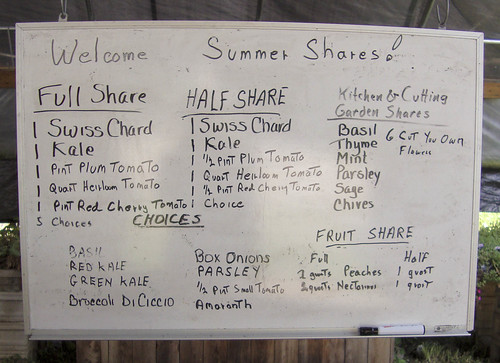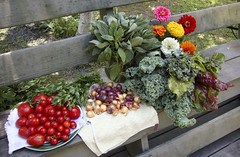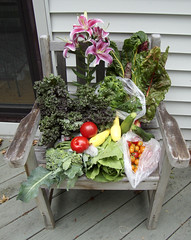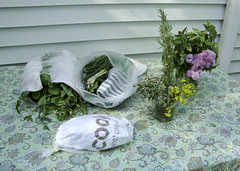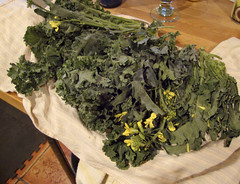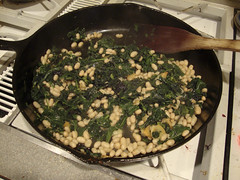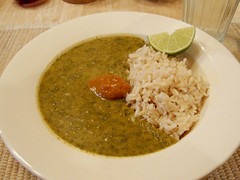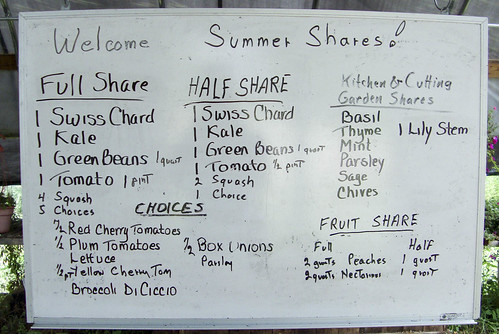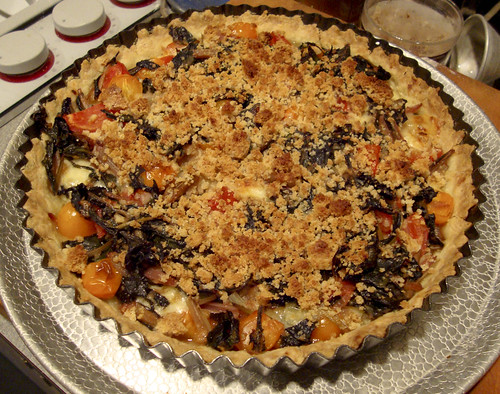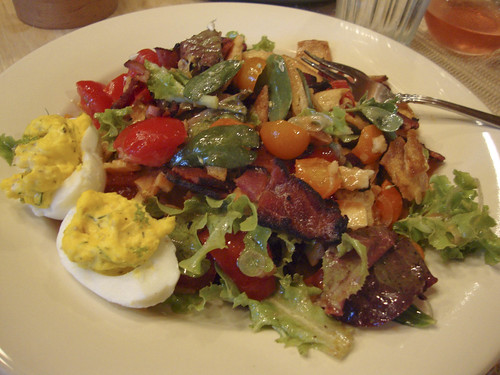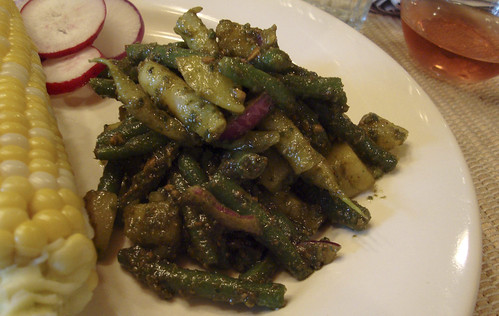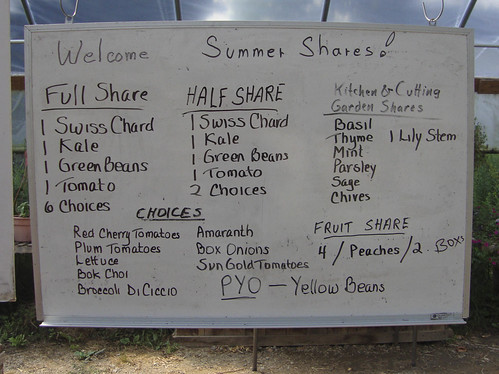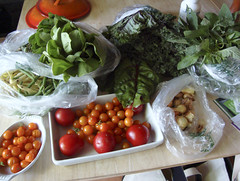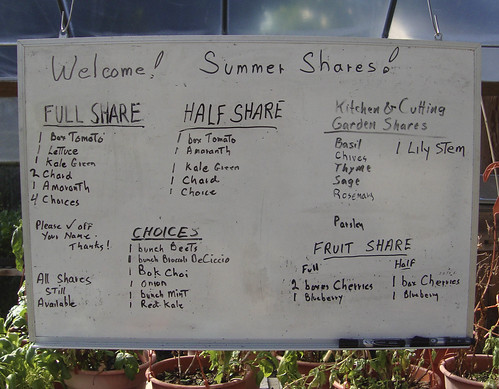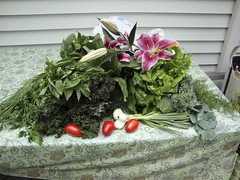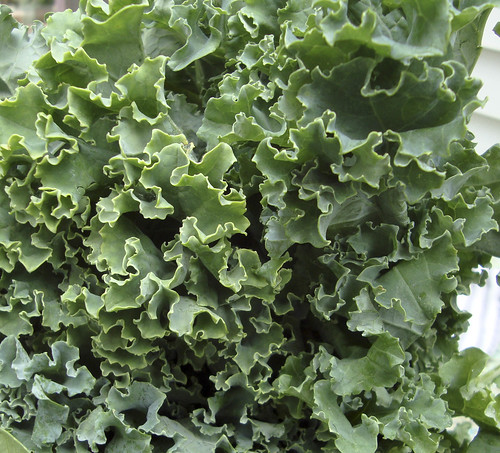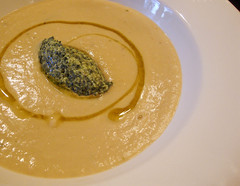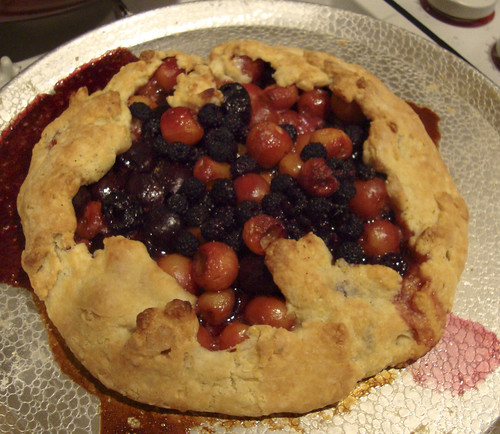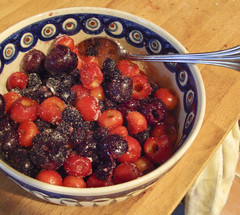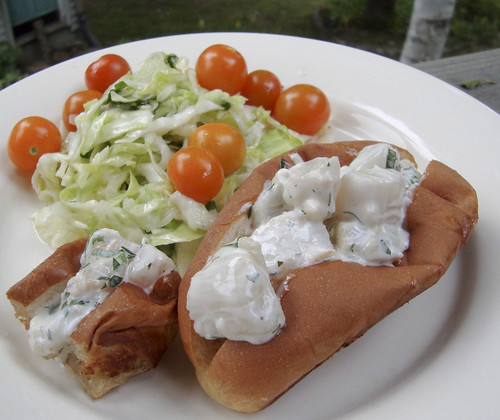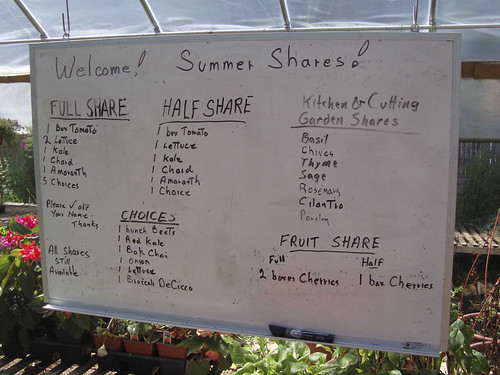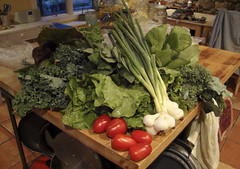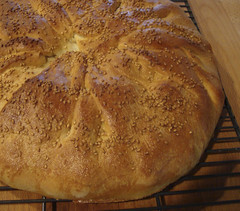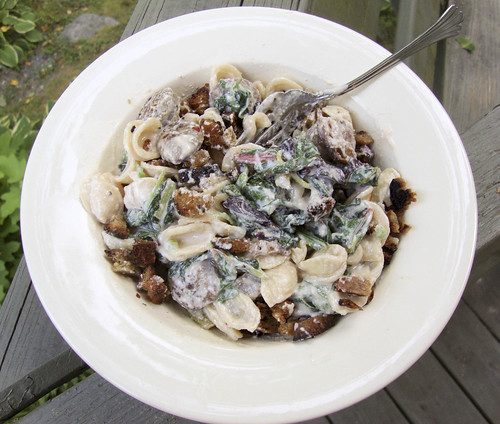 This meal was inspired by a dish I used to make a long, long time ago. It was called Rigatoni alla Buttera. It's a hearty plate of pasta, sauced with ricotta (or cream) and tomato and studded with peas and chunks of sausage.
This meal was inspired by a dish I used to make a long, long time ago. It was called Rigatoni alla Buttera. It's a hearty plate of pasta, sauced with ricotta (or cream) and tomato and studded with peas and chunks of sausage. Dave begged for some meat on the dinner plate (we've been eating a LOT of all-veggie dishes), so I pulled out the last of some pork sausage I made in my last sausage-stuffing binge (time to pull out the grinder again I guess). I also had a half container of ricotta in the fridge, so it was logical to try to pull a dish together using that too. I had to add some vegetables to the pan so I used Swiss chard (you can sub in spinach, kale or any other green you have on hand) and sliced raw onions.
To add a little crunch I made a handful of big breadcrumbs by cubing stale bread and pan frying them in olive oil.
Orecchiette with Chard, Sausage and Ricotta
2-3 servings
- 8 ounces Italian sausage, cut into bite-sized pieces
- 8 ounces orecchiette pasta (substitute shells if you can't get your hands on orecchiette)
- 1 bunch Swiss chard, cut into bite-sized pieces
- 12 ounces ricotta
- 1 small onion, sliced into paper-thin rings
- 1-2 handfuls big breadcrumbs
In a large skillet, sauté the sausage over medium-high heat until cooked through and browned.
While the sausage is cooking, bring a pot of water to a boil and cook the orecchiette to al dente. Right before the pasta is done, add the Swiss chard into the pasta pot to wilt it down. Drain the pasta, reserving a cup of the cooking water to use in the sauce (I usually put a coffee cup in my colander to remind me to save a cup of water.)
Put the pasta and chard back into the pasta pot with the ricotta, sliced onion and sausage. Stir everything together, adding a little pasta water to loosen up the sauce and make it creamy. Taste and add salt & pepper as desired. Just before serving, stir in big breadcrumbs.
This Summer, I am chronicling my first CSA (Community Supported Agriculture) experience. My CSA share is from Arrowhead Farm, a farm based in Newburyport, MA. Each week, I am posting about what was in my share and what I'm doing with it. By way of full disclosure, I won my share through a raffle and am not paying for it. However, Arrowhead did not know I was entered in the raffle, and I received no special consideration because of this blog. I paid for my livestock share. A full set of all the photos I've taken of this share is here.
